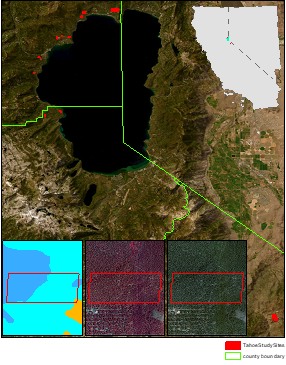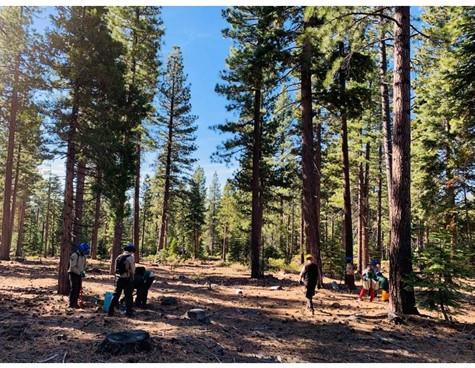
Over the last decade, climate-exacerbated weather patterns have devastated California’s wildlands through catastrophic wildfires, widespread and unprecedented pest outbreaks, and severe and prolonged drought, costing billions of dollars in climate change liabilities. Given the scale and extent of habitat loss due to these multiple threats, the development of resilient approaches that integrate genetic considerations and comprehensive geospatial datasets are needed in combination with traditional methods to improve ecosystem restoration outcomes, secure diversity, and local adaptation in wild populations. We are at a point in time in which resilient approaches steered by advances in technological and scientific understanding can equip land managers with effective adaptive ecosystem restoration tools to respond to extraordinary changes in forested landscapes and facilitate ecosystem recovery. We can also foster a diverse and equitable workforce around forestry and restoration initiatives throughout the State while increasing the scope and scale of ecosystem restoration.
 Employing remote sensing technologies, advanced algorithms, and machine learning, we will develop a model to evaluate survivorship of sugar pine seedlings in mountain pine beetle impacted forest stands in the Tahoe Basin and Monitor Pass, burned in the 2015 Washington Fire. Remote sensing (RS) imagery and high-resolution microtopographic maps will be used with other geospatial datasets (e.g., soils, drainage patterns) to develop GIS algorithms that identify site conditions (e.g., presence of late-lying snow patches, soil properties, canopy water status) to select appropriate microsites for planting locally sourced and diverse seed material. In the map figure on the right are all restoration locations in the greater Lake Tahoe region. The inserts at the bottom are examples of geospatial RS datasets for a specific site of soil properties, soil available water capacity (bottom insert left), and NAIP (National Aerial Imagery Program) data of vegetation cover in infrared and natural color (bottom middle and right insert, respectively).
Employing remote sensing technologies, advanced algorithms, and machine learning, we will develop a model to evaluate survivorship of sugar pine seedlings in mountain pine beetle impacted forest stands in the Tahoe Basin and Monitor Pass, burned in the 2015 Washington Fire. Remote sensing (RS) imagery and high-resolution microtopographic maps will be used with other geospatial datasets (e.g., soils, drainage patterns) to develop GIS algorithms that identify site conditions (e.g., presence of late-lying snow patches, soil properties, canopy water status) to select appropriate microsites for planting locally sourced and diverse seed material. In the map figure on the right are all restoration locations in the greater Lake Tahoe region. The inserts at the bottom are examples of geospatial RS datasets for a specific site of soil properties, soil available water capacity (bottom insert left), and NAIP (National Aerial Imagery Program) data of vegetation cover in infrared and natural color (bottom middle and right insert, respectively).
Previous ecological and genetic studies on sugar pine and other five-needled white pines provide valuable information regarding seed source material for restoration and reforestation. For example, the 2012-2016 drought resulted in significant mountain pine beetle–mediated sugar pine mortality on the north shore of the Lake Tahoe Basin. Seed produced by numerous surviving individuals throughout the area hold the genetic diversity and promise for drought-adapted progeny, which could be used in climate-ready restoration projects. The Washington Fire of 2015 destroyed thousands of acres of mixed conifer forests, including a unique population of sugar pine in the Monitor Pass area on the Humboldt-Toiyabe National Forest.

In 2014, gene conservation collections were made from these sugar pine populations that will allow for local and diverse seed material to be planted. We will track the fate of each genetic individual in all restoration plantings. This study has application to management on Federal and State lands where seed sources from collection trees are often bulked and genetic identities and source locations may be unknown. This work can provide a critical tool in understanding small- and large-scale restoration success and guide source seed selection strategies more generally across the State.


This project establishes a pipeline that recruits and integrates a diverse and equitable workforce into conservation and forest health-related careers by giving California Conservation Corps (CCC) members applied experience in STEM (e.g., restoration, geographic information systems science, plant sciences, and drone technology). These pipelines are vital to improving our field and training the next generation of forest conservation experts. We will build upon past work and improve project outcomes by strengthening our existing partnership with the CCC – with the goal of fostering a diverse workforce around forestry, restoration, and climate change initiatives as we improve restoration strategies.
